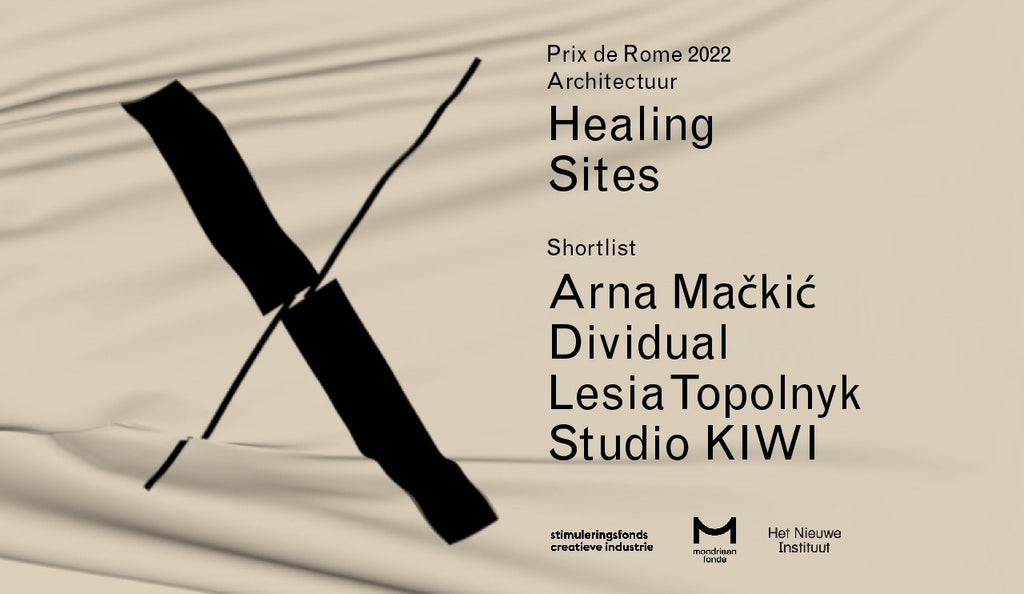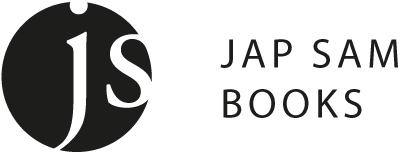Shortlist Prix de Rome 2022 Architecture 'Healing Sites'

The jury of the Prix de Rome has selected four entries for the shortlist for the Prix de Rome 2022 Architecture: Healing Sites from 53 anonymous entries. The Prix de Rome is the oldest and most generous award in the Netherlands for visual artists under the age of 40 and architects under the age of 35. Jap Sam Books will publish the accompanying publication. Today we will introduce you to the architects and their submission for the open call from which they were selected.
Jury
The jury of the Prix de Rome 2020 Architecture consists of Afaina de Jong (founder and director AFARAI), Alessandra Covini (co-founder and co-director Studio Ossidiana, winner of Prix de Rome 2018), Carson Chan (director Emilio Ambasz Institute at MoMA), Dirk Sijmons (founder H+N+S Landschapsarchitecten), Jan Jongert (founding partner Superuse Studios) and Syb Groeneveld (executive director Stimuleringsfonds Creatieve Industrie, technical chairman).

Arna Mačkić (1988, co-founder Studio L A)
International Centre for Architectural Disaster calls on the responsibility of architects to heal the wounds of architectural disasters. The building of the International Criminal Tribunal for the former Yugoslavia in The Hague is redesigned to host a new institution that will heal through restorative justice, a process that focuses on mediation instead of trial. This is done in order to expose the systems behind architectural disasters, to give voice to those affected, to repair the damage, and to generate spatial knowledge resulting in a new architectural movement. The jury praised the original approach where multiple sites could be dealt with through the redesign of a symbolic building. A site that also calls into question what we do with our obsolete institutions. The spatial statement provided a clear proposition and the text was, in the opinion of the jury, beautifully composed, giving a serious critique of where we stand as a profession. The jury reflects that all disasters could potentially be seen as ‘architectural’ disasters. What would be needed to establish this new healing legal structure and how does this translate in an architectural intervention that dynamically engages different stakeholders?

Arna Mačkić, Submission Open Call: Healing Sites

Lesia Topolnyk (1989, founder StudioSpaceStation and works at Fabrications)
No Innocent Landscape states that the current man-made struggle is inevitably embedded in the landscape. The small mining village of Hrabove is a very apparent site for this, which all of a sudden became of national importance to the Dutch, irrespective of geographical borders, due to the MH17 tragedy. The jury was very much impressed by the choice of a site that holds extreme relevance to the central topic of ‘guilty landscapes’ and how it is gathering traces and fragments of the different forces at play: from the downing of the aeroplane to the illegal mining activities in the region. This strong conceptual approach is reflected in the spatial statement, that shows equally artistic quality, through layered use of audio and video, and a sensitivity to historical events. The jury underlines that design can act as a spatial language revealing invisible processes and questioning a healing way forward. How can the proposal go beyond an autonomous artistic intervention and activate the forensic research to heal all those connected to the site?

Lesia Topolnyk, Submission Open Call: Healing Sites

Studio KIWI: Kim Kool (1989, works at Strootman Landschapsarchitecten) and Willemijn van Manen (1989, works at ZUS)
Grounds of [In]justice addresses the mistrust by the people of the Dutch government in the aftermath of the toeslagenaffaire. In the face of climate change, which can only be tackled if “we stand together”, the project identifies the need for a restoration of trust. As a gesture of reconciliation by the government, Studio KIWI proposes to start a healing process by reconsidering the design of the twenty-one counters of the Belastingdienst. The jury appreciated the layered approach in which social issues were carefully connected to physical architecture and where the healing is sought on both a material and systematic level. In addition, the jury praised the imaginary expression of the proposal in the images and the spatial statement, showing the artistic capabilities of the candidates. How can the proposed sites become part of a healing process beyond being spaces of contemplation, but as spatially performative and activating in restoring trust in our fiscal services?

Studio Kiwi. Submission Open Call: Healing Sites

Dividual: Andrea Bit (1992, co-founder Dividual and works at MLA+) and Maciej Wieczorkowski (1990, co-founder Dividual and works at KCAP)
Colonies of Benevolence focuses on the topic of colonialism on our home turf centred specifically around Veenhuizen. Its complex history provides a current day reflection on the relation between labour and nature, showing that healing is not always an innocent process. The jury praises the analytic premise that led to the choice for a location filled with historical tensions. The spatial statement showed an artistic precision that carried through in the written work tying Dutch colonialism, the beginnings of Dutch welfare, and a celebration of the unproductive. How can the historical significance of the site become actively healing in our times?

Dividual. Submission Open Call: Healing Sites
For the final round the four candidates are asked to further develop their positioning and propose spatial interventions for their selected Healing Sites. They will each be given a work budget to develop their design proposals during a four-month working period. The designs will be exhibited at Het Nieuwe Instituut in Rotterdam from November. Based on these works the jury will announce the winner at the start of December. The winning candidate will receive 40.000 euros and a residency abroad.
Prix de Rome
This year the Prix de Rome Architecture is organized by the Mondriaan Fund in collaboration with the Creative Industries Fund and Het Nieuwe Instituut, on behalf of the Ministry of Education, Culture and Science.
www.prixderome.nl
www.mondriaanfonds.nl
www.hetnieuweinstituut.nl
www.stimuleringsfonds.nl

